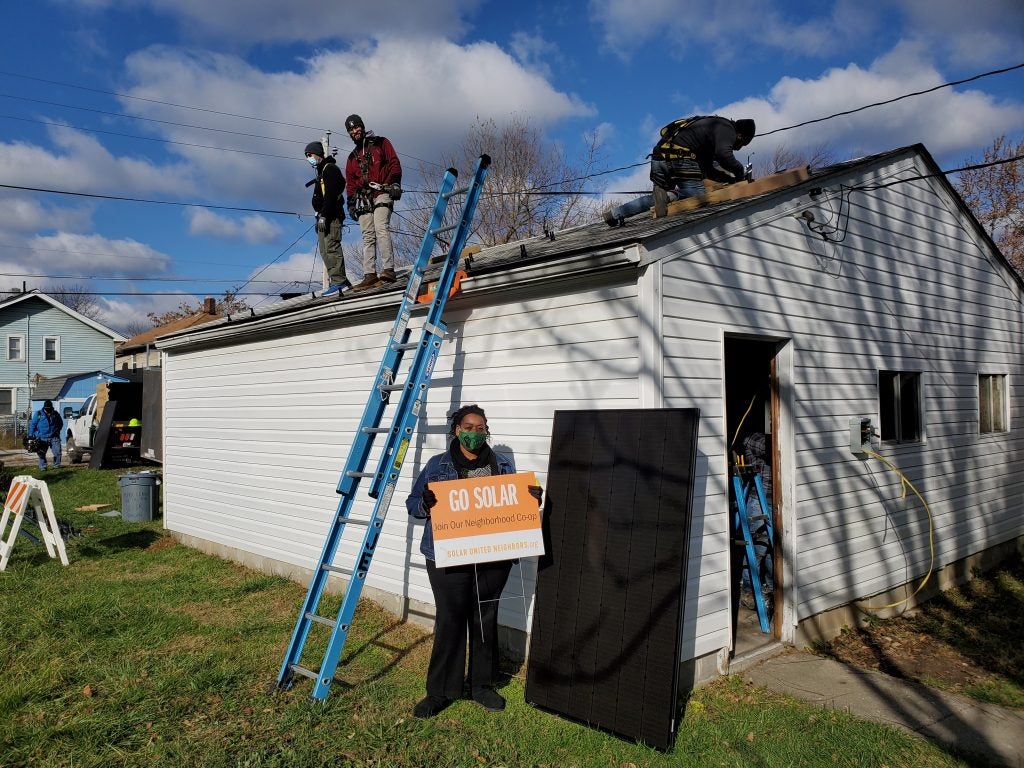Solar addresses high energy costs in Indianapolis, shows path to fairer, better energy system

The cost of electricity places a heavy burden on low-income families. That’s why Solar United Neighbors has helped ten Indianapolis, Indiana families go solar in the past year. This work shows that solar is a solution to high energy costs.
Energy burden falls hard on low-income households
Low-income neighborhoods and communities of color pay a higher percentage of their income toward electricity when compared to more well-off neighbors. This figure is called “energy burden.” The difference is stark. A typical low-income household will pay nearly three times what a more well-off household will pay as a percentage of their income.
Getting solar to Indianapolis families
Our work to fight high energy burdens came about through a partnership with the City of Indianapolis’ Office of Sustainability. The Bloomberg Philanthropies American Cities Climate Challenge also provided support. Together we created a program that helped low- to moderate-income (LMI) homeowners and families go solar. Families were also able to make energy efficiency upgrades to their homes. These were provided free of charge. SUN also partnered with Kheprw Institute and Indianapolis Neighborhood Housing Partnership on the program.
Carmela Thomas of Near-North Indianapolis was the first homeowner to receive an installation. Since, nine more solar installations have been completed around the city. These include installations on the near Eastside and in Warren Township. Private foundations and generous individual donors provided the financial support to make the installations possible.
This pilot program is a part of the Thrive Indianapolis Plan. This is Indianapolis’s first sustainability action plan. The goal of the plan is to transformIndianapolis into a national sustainability leader. Critical to SUN, one of the plan’s objectives is for 20% of energy consumed in Indianapolis to come from renewable sources by 2025.
But just generating renewable energy isn’t enough. Energy burden shows that if families don’t have ownership in their electricity, they risk being left behind. That’s why SUN and our partners identified the need to bring solar to low-income households. Energy burden is a serious problem in the city. Indianapolis had the third-highest energy burden out of 26 cities in a recent study. The average Indianapolis household spends nearly six percent of its income on gas and electricity. This is64 percent more than the national average. This eye-popping average number hides the significant inequality that causes certain communities to be harmed by higher energy costs.
The 20 percent most burdened Census tracts in Indianapolis pay an average of 11¢ of every dollar they earn to energy bills. This is more than just a financial concern. Research shows that high energy burden correlates with poor health.
Rooftop solar is key to a just energy system
Our pilot program shows that solar energy can reduce energy burdens in low-income communities. This is why rooftop solar must be the centerpiece in a just and equitable energy system. From improving public health to individual wealth generation, solar energy is an essential piece to a cleaner and more democratic energy system. This will benefit everyone. Benefiting everyone not only means job creation and individual savings on energy bills. It also means challenging the structural racism and classism built into our current energy system. This is the system investor-owned utilities fight to maintain. We have an opportunity to reimagine our energy system and create a better one where everyone has a say in where their power comes from and where everyone benefits.
If you want to help fight climate change, social injustice, and economic downturn, we urge you to sign the 30 Million Homes petition. Follow this link to sign the petition and find out more ways you can volunteer and learn more about what you can do to help.
